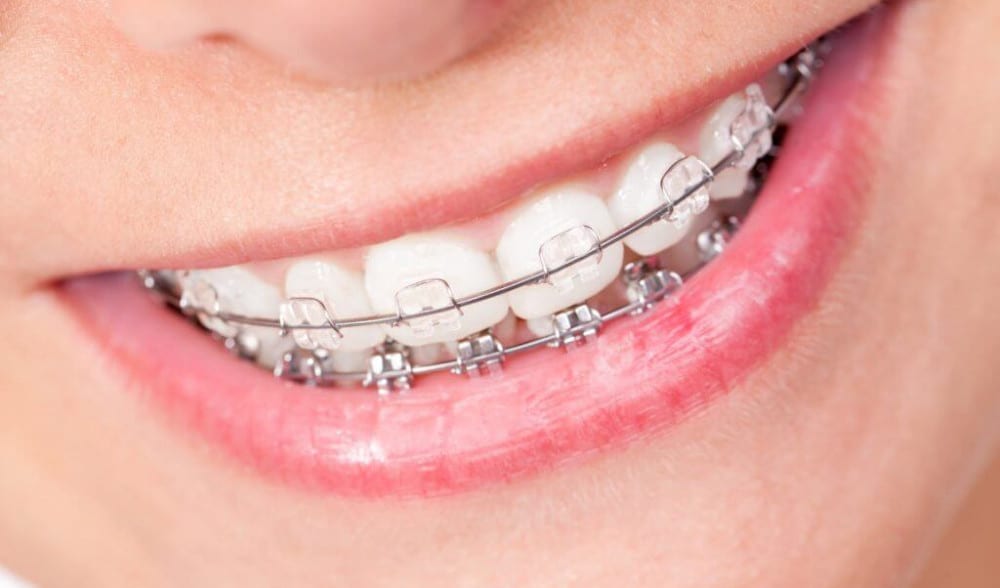Gingivitis with Braces
The road to a beautifully straight smile using braces can be filled with many roadblocks, including plaque removal. If plaque isn’t removed on a consistent basis, it creates a sticky film that produces bacteria and can lead to a minor gum disease called gingivitis. Thankfully, gingivitis is reversible and you never need to wait until the end of your orthodontic treatment to get rid of it. If you are wearing braces and suspect you may have gingivitis, continue reading to learn about the symptoms, causes, and treatment/prevention options!
Signs and Symptoms of Gingivitis
- Noticeably bad breath
- Tenderness or sensitivity in your gums
- Loose teeth
- Red, irritated, swollen gums
- Minor bleeding after brushing and flossing
It is important to note that everyone is different and symptoms may vary from mild to severe. If you are experiencing any unusual or major discomfort with your braces, we recommend consulting with your orthodontist to understand your situation in more detail.
What Causes Gingivitis?
The most common cause of gingivitis is plaque. Plaque is composed of bacteria, food particles and saliva. It forms on your teeth and gums every time you eat or drink anything. It sticks to your teeth and gums, and can be removed simply by brushing and flossing every day. The problem with plaque is that if it’s not removed, it hardens into tartar (also known as calculus) and becomes much more difficult to remove. Over time, this buildup can cause damage to the enamel of your teeth and lead to other problems like tooth decay or more severe gum disease.
Additionally, wearing braces makes you more susceptible to gingivitis because your gums become more sensitive. The brackets and wires responsible for moving your teeth naturally aggravate your gums and cause a bit of swelling. The stress from braces combined with unwanted bacteria, increases the likelihood for irritation and inflammation in the gums leading to gingivitis. In addition to braces and oral hygiene, there are other factors such as a poor diet, underlying health conditions, genetics, and tobacco use that may increase your possibility of developing gingivitis.

How to Prevent Gingivitis with Braces?
To prevent gingivitis with braces, a good oral hygiene routine is important. Brushing your teeth at least two times in a day and using dental floss once a day covers the basics, but there are additional ways to prioritize your gum health for the duration of your braces treatment. Here are some tips that will help you go the extra mile to prevent gingivitis with braces:
- Use an antibacterial mouth rinse daily to kill germs.
- Drink plenty of water throughout the day to keep your mouth moist and reduce plaque formation on the surface of your teeth.
- Use a Waterpik or soft bristled toothbrush to rinse your mouth and get rid of food debris after eating.
- Eat healthy foods. Avoid foods that contain sugar and starch, as they increase plaque formation on your teeth. Instead, eat fruits and vegetables that contain essential nutrients for healthy gums and teeth.
- Use an interdental brush to remove plaque from hard to reach places, such as between brackets and behind wires. Interdental brushes are thin, round or cone-shaped brushes with a small head of bristles held on by wire.
- Visit your dentist regularly for professional cleaning, which will remove any plaque or tartar buildup on your teeth that could cause gingivitis or periodontal disease.

Take Care of Your Smile with Frey Orthodontics
Here at Frey Orthodontics, we want your orthodontic experience to be as comfortable as possible because we care about you and your smile! If you notice any of the gingivitis symptoms listed, or if you’re feeling any major discomfort with your braces, like swollen gums, please don’t hesitate to get in touch with our office for help. We’ll check to see what’s causing your discomfort and provide home care tips to keep your smile healthly.
We offer free consultations so you can be sure you’re making the right treatment decisions. Contact us today or visit our offices in Naperville or Algonquin for more information.
For additional readings and information check out The Frey Orthodontics Blog.

